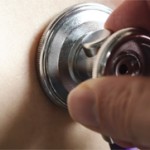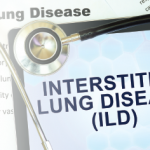Many unresolved issues related to connective tissue disease and interstitial lung diseases emerge from this genetic understanding of FIP, said Dr. Blackwell. Among these are whether there is an overlap of IPF with FIP in genetic susceptibility and/or environmental triggers, the importance of the pathological characterization of disease, whether differences with FIP require different treatment strategies, whether antifibrotic strategies can be used, and the importance of subclinical disease.
Pathogenesis Better Understood
Emphasizing the need to better understand the causes of fibrosis in rheumatic diseases, Thomas Wynn, PhD, chief, Immunopathogenesis Section, Laboratory of Parasitic Diseases, National Institute of Allergy and Infectious Diseases, Bethesda, Md., walked participants through research showing the major role played by the immune response to wound repair and fibrosis.
Saying that fibrosis or scarring is a major pathogenic feature of rheumatic disease, as it is for most chronic inflammatory diseases, he cited research showing that there are multiple immunological mechanisms contributing to the development of fibrosis. For example, he said that the major profibrotic cytokine IL-13 can promote fibrosis via a mechanism that is distinct from TGF-b1.5
He also cited research on the role played by macrophages showing that tissue macrophages are critical to the initiation and maintenance of granuloma inflammation and fibrosis. Because they are important inducers and suppressors of fibrosis, he said a better understanding of macrophages and how they function in chronic inflammatory and fibrotic diseases could offer new approaches to treatment.
Regeneration of Lungs
Darrell Kotton, MD, professor of medicine and pathology, director, Center for Regenerative Medicine, Boston University, ended the session by discussing research on the potential to regenerate lungs by reprogramming cell types. Although methods currently exist for bioengineering recellularized lung tissue for disease modeling, he said that using this technology for transplantation remains far into the future. He also emphasized the need for extreme caution with this technology, highlighting the need for optimization of recellularization, the need for multiple cell lineages, and the need for more maturation of induced pluripotent stem (iPS) cells.
References
- King TE Jr, Bradford WZ, Castro-Bernardini S, et al. A phase 3 trial of pirfenidone in patients with idiopathic pulmonary fibrosis. N Engl J Med. 2014;370:2083.
- Richard L, de Bois RM, Raghu G, et al. Efficacy and safety of nintedanib in idioipathic pulmonary fibrosis. N Engl J Med. 2014;370:2071.
- U.S. Food and Drug Administration. FDA News Release. FDA approves Esbriet to treat idiopathic pulmonary fibrosis. October 2014. http://www.fda.gov/NewsEvents/Newsroom/PressAnnouncements/ucm418991.htm.
- U.S. Food and Drug Administration. FDA News Release. FDA approves Ofev to treat idiopathic pulmonary fibrosis. October 2014. http://www.fda.gov/NewsEvents/Newsroom/PressAnnouncements/ucm418994.htm.
- Wynn TA. Integrating mechanisms of pulmonary fibrosis. J Exp Med. 2011;208(7):1339–1350.



